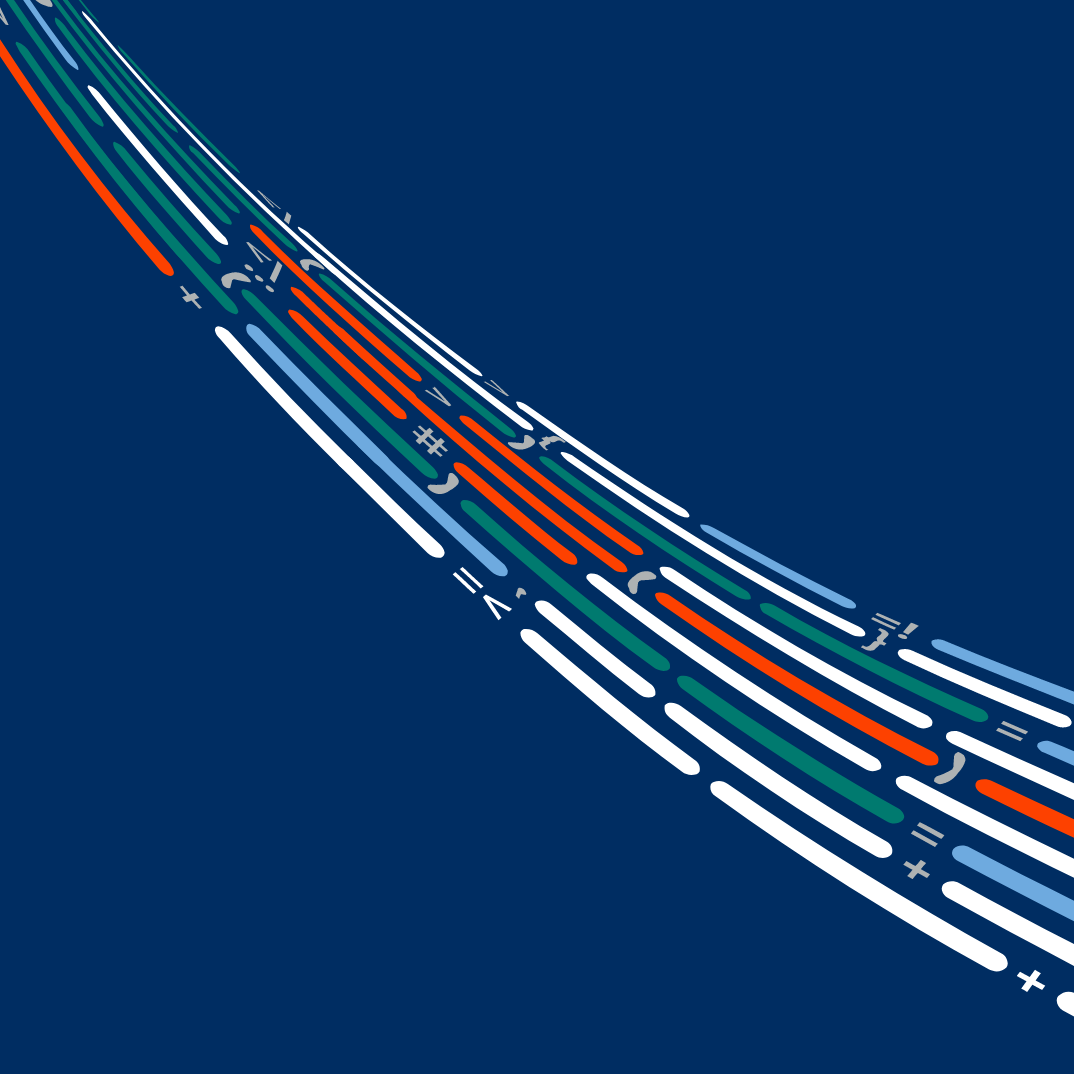Digital Benefits Network
Highlights
- Expanding access and uptake of public benefits by documenting and sharing equitable data, design, and technology-driven interventions.
- Leading a network of public benefits practitioners who are implementing innovative ways to improve access and administration.
- Creating actionable tools and resources to replicate proven approaches across benefit programs.

As millions of people seek core financial, housing, nutrition, health, and family support, they face barriers in receiving and keeping public benefits. We believe accessing public benefits and services can be effective, equitable, and easy if you have the right tools and processes in place.
The Digital Benefits Network convenes practitioners who work in and alongside every level of government to spark dialogue, share resources, and support better digital delivery of public benefits and services.
Why Now
The number of people living in poverty in the United States has been decreasing, and yet far too many remain without true economic opportunity. As the digitization of public benefits delivery increases, it also risks furthering systemic inequities in who receives support, leaving the most vulnerable behind.
There are opportunities to improve service delivery for everyone accessing public benefits if we adopt digital tools and processes with equity, accessibility, and ethics in mind. With 2021’s historic passage of the American Rescue Plan Act and the Executive Orders on racial equity and customer experience, the funding, policy, and leadership perspectives are aligned to radically transform the social safety net for generations to come.
How We Work
The Digital Benefits Network lifts up approaches across benefit programs with a focus on food and nutrition (SNAP, WIC), health (Medicaid/CHIP), cash assistance (TANF, UBI), and unemployment insurance (UI). We help solve current challenges in human-centered digital delivery of public benefits, and scan for what’s on the horizon through equity and ethics lenses. A shared vision unites our members: to make access to economic and well-being supports more equitable, effective, and easy to navigate.
Convening
We host events and communities of practice on topics sourced from our network. Subscribe to the Digital Benefits Network to be the first to know about upcoming events. Get in touch if you’re interested in joining one of our communities of practice.
Our communities of practice include:
- The Unemployment Insurance Technology Coordinating Coalition engages cross-sector practitioners, including: states, legal advocates, labor unions, technologists, think tanks and other nonprofits through bi-weekly calls, annual convenings, closed-door sessions, research, and technical assistance. The goal is to ensure that the $2 billion appropriated in the American Rescue Plan Act for the U.S. Department of Labor to address timeliness, equity, and fraud prevention in the UI system over the next two years is spent on technology that works for beneficiaries and ensures equitable access.
- The Best Practices Working Group, co-chaired with the American Public Human Services Association (APHSA), brings together leaders focused on benefits integration to share examples and effective approaches across states and advise on best tools for sharing practices, including the Digital Benefits Hub.
- The Benefits Eligibility Rules as Code Community of Practice is furthering an open source data standard and syntax for U.S. benefits eligibility rules and engages delivery organizations, states, territories, tribes, local governments, and federal agencies in advancing rules as code for their eligibility and determination systems.
Tools
The Digital Benefits Hub hosts resources for practitioners working at every stage of the benefits journey. It presents an opportunity to explore resources, case studies, and implementation tools that facilitate learning from and with peers transforming delivery of public benefits and services through data, design, and technology. The Digital Benefits Hub is created in partnership with the American Public Human Services Association (APHSA).
We publish toolkits, guides, case studies, and other resources. Find all Digital Benefits Network-authored resources on the Digital Benefits Hub.
Research
The Digital Benefits Network pursues ongoing research prompted by areas of inquiry from network members.
- Digital authentication and identity proofing in public benefits
Our research on digital identity is driven by our concern about online application requirements and implementations of identity proofing that may create additional burdens for applicants. We are concerned that these processes and technologies may potentially block benefits seekers from applying for or receiving benefits, duplicate processes across programs, and raise challenging issues around privacy and data security. We are also concerned that the advocacy around recent technology implementations has been an all-or-nothing approach to remove a type of technology, rather than supporting government practitioners in navigating solutions that make these processes secure while producing equitable outcomes.
We are seeking to create clarity, shared definitions, landscape analysis, and best practices for the use of digital identity in public benefits. Our publications include:
-
- An open data set and analysis of digital authentication and identity proofing practices across online applications for Supplemental Nutrition Assistance Program (SNAP), the Temporary Assistance for Needy Families program (TANF), Medicaid, the Special Supplemental Nutrition Program for Women, Infants, and Children (WIC), child care (CCAP), and unemployment insurance (UI).
- Logging In and Providing Proof: A Guide to U.S. Government Actions on Digital Identity which summarizes many initiatives and activities from Congress, the White House, federal agencies, and coalitions which may impact the digital identity landscape at various levels of government in the United States.
- A glossary of digital identity terms
- A primer, What is Digital Identity?
- A short explainer about digital identity in public benefits programs
This research also involves interviews and case studies with practitioners to highlight challenges and successes in implementing online login and identity proofing processes. Please get in touch if you are interested in learning more or sharing about your organization’s experiences.
- Benefits eligibility rules as code
Public benefits are governed by a complex array of federal, state, Tribal, and local entities and policies. We hope to spark dialogue and progress in advancing a standardized, open rules as code approach for the U.S. safety net. When this is achieved, rules will be communicated using a common, expandable syntax, they will be easy to find and incorporate into digital systems, and will be kept up to date to reflect the latest policy changes and new types of policies and benefits as they arise.
We published the first report exploring rules as code applied to the U.S. safety net in February 2022.
-
- We hosted Rules as Code Demo Day in June 2022.
- See the Digitizing Policy page on the Digital Benefits Hub for more resources about rules as code, including our short repots on Applying Rules as Code to the Social Safety Net and Envisioning a Federal Rules as Code Approach to Public Benefits Eligibility, and videos and case studies.
- We are conducting a joint research project with the Massive Data Institute to investigate how federal agencies and state and local counterparts communicate updates to rules and how to build on the work of the community and existing frameworks. In June 2022, we published Exploring Rules Communication: Moving Beyond Static Documents to Standardized Code for U.S. Public Benefits Programs.
- Additionally, we are analyzing state, territorial, Tribal, and local government eligibility and enrollment systems; further investigating existing standards used in writing benefits eligibility logic and code; and documenting processes used for writing rules into code in demonstration projects in the U.S. and internationally.
- We are exploring how to create a proof of concept and build on the research and work already happening in the rules as code community. The anticipated pilot project will test a rules as code approach to multiple federal benefits programs in several states, territories, tribes, counties, or municipalities, with participation from several delivery organizations.
- Please contact us with your thoughts, questions, or potential collaborations.
Project Updates
Project Reports & Resources
Digital Benefits Hub
Oct. 20, 2022
Accessible Benefits Information: Reducing Administrative Burden and Improving Equitable Access through Clear Communication About Safety Net Benefits
Jan. 13, 2022
Benefit Eligibility Rules as Code: Reducing the Gap Between Policy and Service Delivery for the Safety Net
Feb. 22, 2022
Integrating Social Safety Net Benefits: Options for State and County Agencies Informed by Recent Integration Successes
Jan. 31, 2022
Using Text Message Outreach to Reduce SNAP Churn
Oct. 7, 2021
Preparing for Human-Centered Redesign
Dec. 6, 2021
What We've Learned So Far
The importance of building a network among service providers, benefits administrators, and policy makers working to make public benefits more accessible.
Identified existing data, design, technology, and innovation-enabled interventions to improve benefits access and administration through our landscape research.
How to support public benefits agencies improving applications through human-centered design and integration.
How public benefits agencies can build capacity to communicate with accessible content.
Outlined approaches to replicate text messaging to support SNAP clients through recertification
How eligibility rules as code can bring legislation and service delivery closer together.







